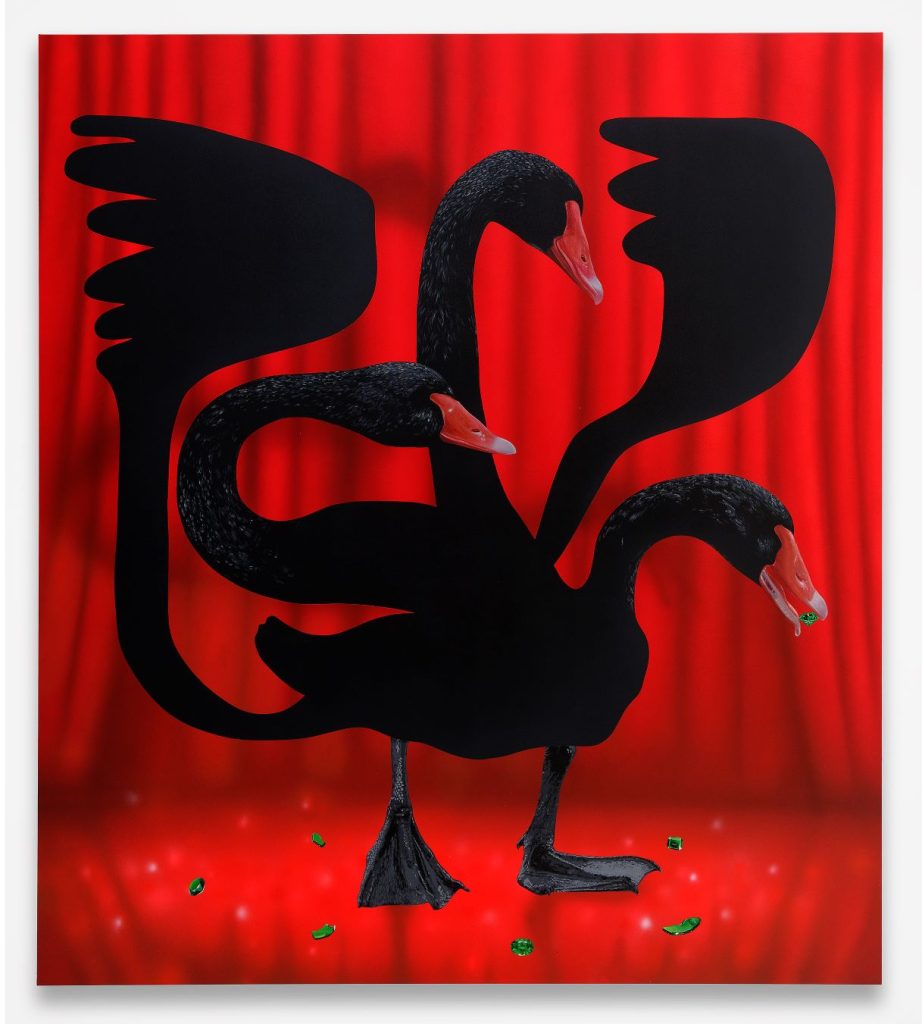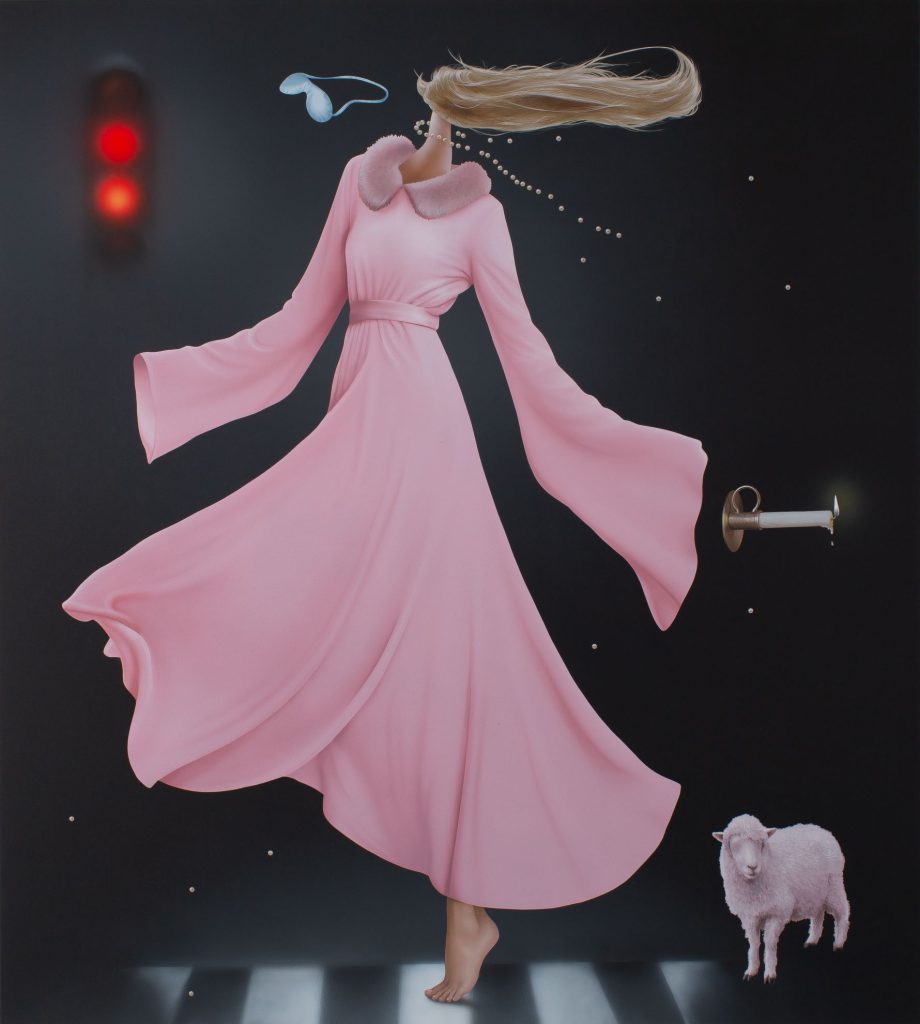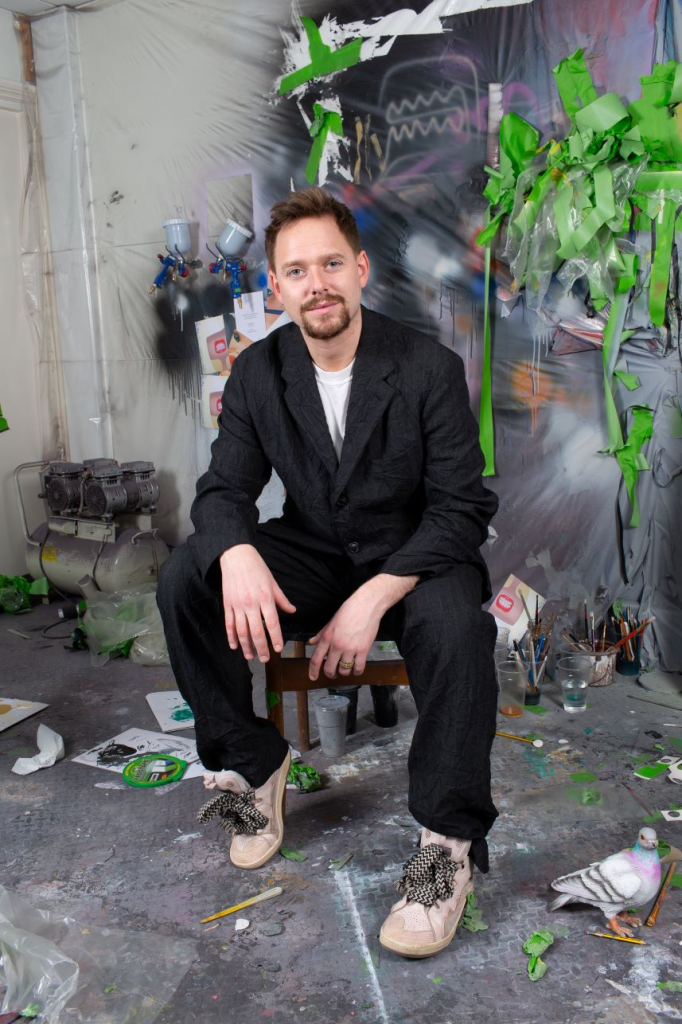
Oli Epp, Hors d’œuvres
2025/3/16 – 5/15
NTNU Art Museum Floor 3
When talking about aesthetic literacy, we must consider how to maintain awareness in the ever-changing world. This awareness is where art becomes most socially relevant and deeply resonant. Accordingly, the NTNU Art Museum introduces art that evolves with the times, sparking discussions on humanistic thought and showcasing artistic perspectives to enrich our lives and sensibilities. This current exhibition “Hors d’œuvres,” in collaboration with gallery Semiose in Paris, invites viewers to engage with Oli Epp’s grotesque, smooth digital artwork, prompting the audience to reflect on the dramatized performative phenomena of social media and the interplay between virtual and physical realities.
Oli Epp, Hors d’œuvres
The Hors d’œuvres exhibition by Oli Epp at the NTNU Art Museum in Taiwan presents a series of recent paintings: the artist offers a gallery of sublimated and ethereal portraits by placing the figures at the center of the composition and giving them emphasized gestures. A hallmark of Oli Epp’s style, the features of the figures are reduced to simple attributes, most often to the painted mouth. This very red mouth is a common symbol in the collective imagination of the second half of the 20th century, from the glamourous mouth of Marilyn Monroe to the Rolling Stones’ Tongue and Lips logo.
Several works in the series present immediate visual correspondences: the multiple necks of the Omen creature echo the three-legged cabaret figure in a black feather costume or the clown with four arms. These repetitions in the image create a clever system for displaying several attitudes in one. They also demonstrate Oli Epp’s interest in hybrid figures and the deliberate blurring of classifications between human, animal, and monstrous.
The accessories and objects scattered throughout the paintings function as symbols with metaphysical properties and metaphorical meanings. These works reconnect with the tradition of portraits with clues, where attributes are intended to shed light on personality. For example, in Sleepwalker, a silhouette in a long pink dress, fur collar, windswept hair, and string of pearls is accompanied by a lamb, a candle, a sleep mask, and a red signal light. In Golden Child, a stork carries a golden trash bag, followed by a passenger plane floating in its wake. Each painting offers a sophisticated game of visual semantics, like a riddle to be deciphered.

2020, Oil and acrylic on canvas, 180 × 160 cm. Photo: Aurélien Mole
Oli Epp delivers a very smooth painting style, with flat, polished areas and blurred zones created with an airbrush. Light spreads in a surreal impression of a backlit screen. The graphic simplicity and seemingly easy decoding of the paintings mask a social satire of rare depth. Born in London in 1994, the artist belongs to a generation raised in a digital technology environment. While Oli Epp’s painting is the product of our increasingly digitized experience of the world (Mara Hoberman), its caustic humor serves as the counterpoint and calls for a salutary distance from our modern excesses.

2025, Oil and acrylic on canvas, 200 × 180 cm. Photo: Margot Montigny
Oli Epp
Born in 1994, Oli Epp lives and works in London. His paintings are autobiographical; sometimes confessional, sometimes irreverent and frequently handled with a humorous sense of pathos. Oli Epp focuses on situations that either involve him or others, in public and private moments that pass by as unremarkable, at a glance. But documenting these unreported tragedies in paint is, for him, an act of discovery. He wants his imagery to feel familiar to as many people as possible; to draw out the ridiculous comedy of certain shared rituals and behaviours, by economizing on the essence of the situation and creating simplified humanoid characters, which lend a sort of parody of the real world in the way that cartoons do. These avatars have oversized heads and are hermetically sealed by an absence of facial features, which is an exaggerated reflection on human interaction in the post digital age – these figures appear idiotically isolated, but adorned with earpieces, branded items of clothing and objects that are important to consumption and communication.
Oli Epp uses the visual language of branding and interplay between graphic and painterly surfaces to create optical confusion, echoing the way that our real and digital lives are merged.
Graduated from the City & Guilds of London Art School in 2017, Oli Epp has received numerous awards and residencies. In 2018, Semiose organised his first gallery solo exhibition.
